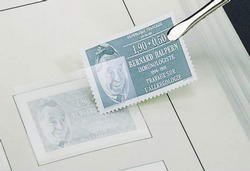Mounting stamps in albums has had four major phases in the 170 years that philately has been a hobby. In the very beginning, collectors were just saving stamps as a whimsical endeavor.There was no science to collecting and the earliest stamp savers would lick the glue on their mint stamps and place them in their albums (This is why today so many of the earliest issue stamps that exist unused don't have any gum). The first generation of collectors never thought that anyone would want their stamps after them and so no effort was made to mount philatelic items in a way that made them tradeable. 
The second generation of collectors learned from this and saw that many specimens that they wanted for their collections had been damaged from faulty mounting. This second generation tried to mount their stamps so that they could be removed from their collections and traded or sold. The first mounts of this type were paper hinges, often the paper selvage of current issues. These paper hinges allowed the stamps to be removed from albums but, in the case of mint stamps, they could not be removed without damaging the gum. By about 1930 the desire to have mounts that were cheap and which were easy to remove led to the development of the peelable hinge which is a tiny piece of glassine with a small amount of a water soluble gum. The glassine is impermeable so the hinge sticks lightly to the stamp and the album page and can be removed with only a small mark on the gum. Beginning about 1960, collectors began to desire even more perfect specimens of their stamps. The light hinge mark that was left when you removed a peelable hinge from a stamp was deemed a fault, so collectors began to use gummed acetate mounts that completely encased the stamps. These are fastened to the album on the outside of the mount and is the mounting system in current use today. When used correctly, it allows stamps to be displayed neatly in a way that shows no evidence of their ever being in a collection. The problem with the current mounts is expense. When mounting lower priced stamps, these mounts often exceed in cost the price of the stamps themselves.
Mounting
Posted October 19, 2018
in News
